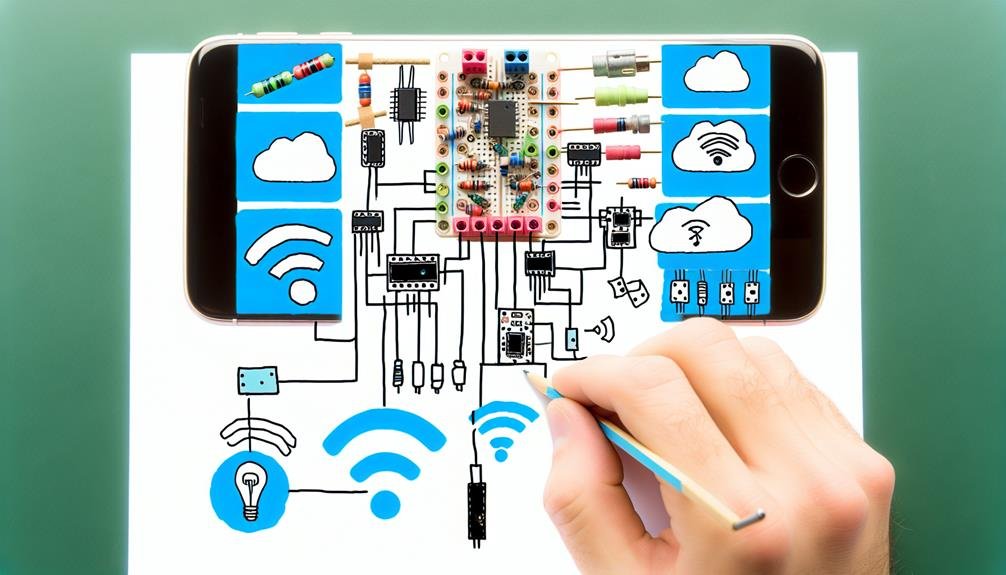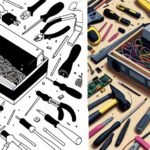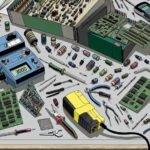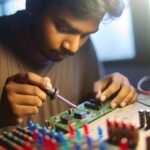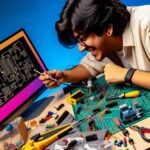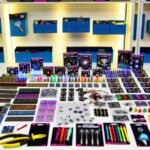Are you tired of your DIY electronics projects feeling outdated and disconnected from the modern world? If so, it's time to explore the exciting possibilities of incorporating IoT into your creations.
By seamlessly integrating internet connectivity into your DIY electronics kits, you can unlock a whole new level of functionality and interactivity. But where do you begin?
In this discussion, we will guide you through the process of adding IoT capabilities to your projects, from understanding the basics to exploring advanced features.
Get ready to take your DIY electronics to the next level and bring your creations into the digital age.
Key Takeaways
- Understanding IoT and choosing the right kit is crucial for successful DIY electronics projects.
- Adding IoT connectivity to your electronics kit requires a microcontroller with built-in Wi-Fi or Bluetooth capabilities.
- Programming IoT functionality involves choosing an IoT platform, writing code, and troubleshooting connectivity issues.
- Exploring advanced IoT features can enhance DIY electronics kits, such as predictive maintenance and energy optimization.
Understanding the Basics of IoT
To understand the basics of IoT, you need to grasp the fundamental concepts and principles that govern the interconnected world of smart devices and data exchange. The Internet of Things (IoT) refers to the network of physical objects, or 'things,' embedded with sensors, software, and connectivity, enabling them to collect and exchange data. These smart devices can range from everyday household items like thermostats and light bulbs to complex machinery used in industries such as agriculture.
One of the key applications of IoT is in home automation. IoT-enabled devices in homes can be interconnected to create a smart home ecosystem that offers convenience and efficiency. For example, smart thermostats can learn your heating and cooling preferences and adjust the temperature accordingly, saving energy and money. Smart lighting systems can be controlled remotely, allowing you to turn off lights when not in use or create automated lighting schedules.
IoT also plays a crucial role in agriculture. Farmers can utilize IoT technology to monitor and manage their crops and livestock more effectively. Sensors can collect data on soil moisture levels, temperature, and humidity, enabling farmers to make informed decisions about irrigation and fertilization. Livestock can be equipped with IoT-enabled tags or collars to track their health and location, ensuring their well-being and preventing theft.
Understanding these basic concepts of IoT is essential for anyone looking to explore the vast possibilities and potential of this interconnected world. By harnessing the power of IoT, you can create smarter homes and more efficient agricultural practices, ultimately leading to a more connected and sustainable future.
Choosing the Right DIY Electronics Kit
As you move forward in exploring the world of IoT, it becomes crucial to carefully select the appropriate DIY electronics kit that aligns with your project goals and technical requirements. Choosing the right kit can make all the difference in the success of your IoT project.
Here are three key factors to consider when selecting a DIY electronics kit:
- Budget friendly options: Look for kits that offer good value for money. Consider the price of the kit and what it includes, such as sensors, microcontrollers, and connectivity modules. Compare prices across different brands and suppliers to find the best deal.
- Technical specifications: Ensure that the kit meets your technical requirements. Consider the type of microcontroller used, the number and variety of sensors included, and the availability of additional components or expansion options. Choose a kit that provides the necessary features and capabilities for your project.
- Troubleshooting common issues: Look for kits that provide resources and support for troubleshooting common issues. This could include documentation, tutorials, forums, or even dedicated customer support. Having access to these resources can save you time and frustration when facing technical challenges.
Adding IoT Connectivity to Your Electronics Kit
Consider incorporating IoT connectivity into your DIY electronics kit to enable seamless communication and data exchange between your devices and the internet. Building a DIY IoT device allows you to integrate sensors with IoT connectivity, opening up a world of possibilities for monitoring and controlling your electronics remotely.
To add IoT connectivity to your electronics kit, you'll need a microcontroller with built-in Wi-Fi or Bluetooth capabilities. Popular choices include the Arduino Uno Wi-Fi Rev2 or the ESP32 development board. These microcontrollers provide a reliable and easy way to connect your devices to the internet.
Next, you'll need to integrate sensors with IoT connectivity. This can be done by using sensor modules that are compatible with your chosen microcontroller. For example, you can connect a temperature sensor module to your microcontroller to monitor the temperature of your electronics remotely. Additionally, you can add a motion sensor module to detect movement and trigger actions based on that.
Once you have integrated the sensors, you can use IoT platforms like Arduino IoT Cloud or Cayenne to connect your devices to the internet and visualize the data collected by the sensors. These platforms provide user-friendly interfaces to monitor and control your DIY IoT device from anywhere in the world.
Programming IoT Functionality in Your Projects
Now let's explore how to program IoT functionality in your DIY electronics projects, allowing you to control and monitor your devices remotely. Developing custom IoT applications can seem daunting, but with the right tools and knowledge, you can easily incorporate this functionality into your projects.
Here are three steps to get you started:
- Choose the right platform: Selecting the right IoT platform is crucial for seamless integration and ease of programming. Look for platforms that offer a user-friendly interface, support multiple programming languages, and provide extensive documentation and community support.
- Write code for device communication: To enable your devices to communicate with each other and with the internet, you'll need to write code. This includes setting up communication protocols, establishing secure connections, and handling data transmission. Depending on your platform, you may use languages like C++, Python, or JavaScript to write this code.
- Troubleshoot connectivity issues: Despite careful planning, you may encounter common connectivity issues when working with IoT devices. These can range from intermittent connections to compatibility problems. When troubleshooting, start by checking your code for any errors, ensuring proper network configuration, and verifying that all devices are powered and connected correctly.
Exploring Advanced IoT Features for DIY Electronics Kits
To explore advanced IoT features for DIY electronics kits, you can delve into the realm of real-time data monitoring and analytics. By incorporating these advanced IoT applications, you can take your projects to the next level and unlock a world of possibilities. One way to achieve this is by utilizing sensors that gather data in real-time and transmit it to a cloud platform. From there, you can analyze the data and gain valuable insights to improve your projects.
To help you understand the potential of advanced IoT features, let's explore some examples in the table below:
| Advanced IoT Feature | Description |
|---|---|
| Predictive Maintenance | Analyzing real-time data to predict when a device or component is likely to fail |
| Remote Monitoring | Monitoring and controlling devices remotely, allowing you to stay connected wherever you are |
| Energy Optimization | Analyzing energy consumption data to optimize energy usage and reduce costs |
| Asset Tracking | Tracking and monitoring the location and status of assets, such as tools or equipment |
| Data Visualization | Visualizing data in a meaningful and interactive way to gain insights at a glance |
When exploring these advanced IoT features, it is important to be aware of and troubleshoot common IoT issues. Connectivity problems, security vulnerabilities, and compatibility issues may arise. By staying informed about these challenges and following best practices, you can overcome them and create robust and secure IoT projects.
